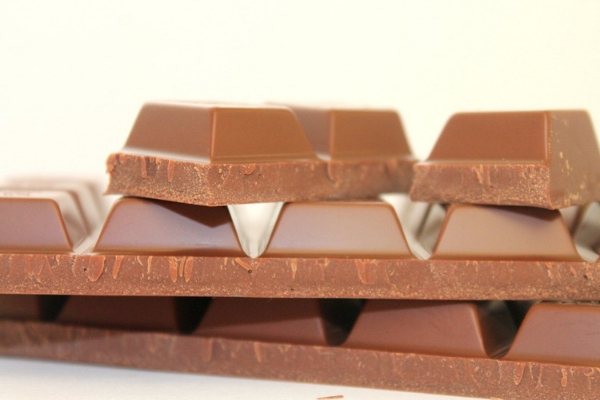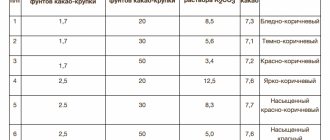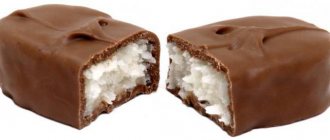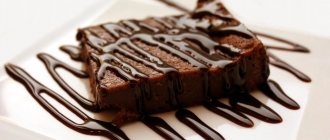History of appearance
Before milk chocolates appeared, cocoa beans came a long way. It began in America, where ancient Indian tribes used this raw material to prepare a hot, bitter drink with spices. For the Mayans, cocoa beans were sacred.
The product migrated to Europe much later - after the discovery of America - and also in liquid form. They put sugar, vanilla, pepper, corn flour, and salt in it. Mostly wealthy people drank this drink. In the UK, milk was first added to it, and this can be considered the beginning of the history of liquid milk chocolate.
Reference
The Dutch began making solid chocolate at the beginning of the 19th century, adding cocoa butter, which has the ability to harden. But then these were dark or bitter species. But the first officially released milk bar was produced in 1875, when powdered milk and more sugar were introduced into the recipe.
Compound
Let's consider what ingredients are included in the product, in what quantities, as well as what beneficial compounds are present in milk chocolates.
What are regular and porous made from?
According to GOST 31721-2012 (interstate standard), milk chocolate is chocolate made from cocoa, milk and sugar. According to the rules, it must contain at least:
- 25% total cocoa solids;
- 25% total fat;
- 12% milk powder or its processed products;
- 2.5% milk fat;
- 2.5% non-fat cocoa solids.
The main ingredients are cocoa butter, powdered or grated cocoa, milk and sugar. In most cases, vanilla is used as a flavoring agent, and soy lecithin is used as an emulsifier (for homogeneity and thickness of the mass). Various products are used as fillings - nuts, pralines, raisins and other dried fruits, candied fruits, berries, etc.
Aerated milk chocolate is made from the same components, so its composition differs from a monolithic bar only in the presence of air bubbles.
Nutritional value (BJU)
Data on BJU per 100 g are as follows:
- proteins – 9.8 g;
- fat – 35 g;
- carbohydrates – 50.5 g;
- dietary fiber – 1.3 g;
- water – 1 g.

These are average figures for chocolate without filling and fillers. They may vary slightly for different brands and types. For example, Alenka milk chocolate contains 8 g of protein, 33 g of fat and 54 g of carbohydrates, while for Nesquik these figures are different - 7.7 g, 34.1 g and 52.9 g, respectively.
What vitamins and microelements does it contain?
The richest in beneficial composition are the bitter varieties. However, dairy also contains mineral elements and vitamins, but in smaller quantities:
- Among the vitamins it contains, the leading ones are B2, PP and B5; it also contains B1, E, B9, B6 and A.
- Of the macroelements, most are phosphorus and calcium, slightly less potassium, magnesium, sodium and sulfur.
- Microelements are represented by manganese, copper, iron, iodine and fluorine.
Other useful substances
Chocolate owes its content of most biologically active and healthy substances to cocoa beans. The product contains theobromine, phenylethylamine, tryptophan, several antioxidants, flavonoids, and polyphenols. Some of them have a stimulating effect on the nervous system, others, on the contrary, soothe, others tone and rejuvenate, have anti-inflammatory and mild analgesic activity. But the listed effects are more pronounced in bitter and dark varieties than in dairy varieties.
Calorie content per 100 grams, how many calories are in a bar, in a slice
100 g contains 550 kcal. Calorie content deviates slightly in one direction or another for different manufacturers and depending on the specific composition. If chocolate contains nuts or dried fruits, the energy value increases. If we start from 550 kcal, take the weight of the bar as 100 g, and the number of slices in it is 6, then the calorie content of one slice will be 92 kcal. You can calculate the calories in a slice and cube of any brand of chocolate yourself in this way.

With semolina and honey
These delicious and incredibly aromatic shortcakes will be an excellent replacement for tired cookies. To make them in your own kitchen, you will need:
- 50 g cane sugar.
- 10 g baking soda.
- 40 g semolina.
- 300 g ordinary baking flour.
- 100 g of natural flower honey.
- 1 egg.
- ¼ stick of butter.
- 1 pinch each of salt, dried ginger and ground nutmeg.

Before you bake the shortcakes at home, you need to take care of the butter. It is kept for a short time at room temperature, and then ground with sugar and honey. The resulting mass is supplemented with semolina, eggs and spices. All this is left for a quarter of an hour and mixed with salt, soda and flour. The dough made in this way is rolled out into a centimeter layer, cut into circles and transferred to a baking sheet. The shortbreads are baked at 180-200 °C for about 10 minutes.
On the subject: Names of poisons: list, types, classification, natural and chemical poisons
Benefits and harms of the product
No matter what odes are sung to a chocolate bar about how this product lifts your spirits and saves you from depression, you need to remember about rationality. The benefits are undeniable, but only when consumed in small quantities and, to be completely truthful, they are significantly less than those of bitter varieties.
Why is it useful?
Here are the valuable properties of the product:
- improves mood, helps to cope with stressful situations;
- is a source of calcium and phosphorus, which is beneficial for bone tissue;
- thanks to a large amount of vitamin B2, it increases skin elasticity, supports hematopoietic function and the functioning of the reproductive organs and endocrine glands;
- relieves PMS in women;
- increases libido in both sexes;
- invigorates and tones due to the presence of theobromine;
- strengthens the walls of blood vessels.
Since the product contains cocoa and sugar, it helps to increase brain activity, and as a result, better performance.

Harm and contraindications
Chocolate should not be consumed under the following conditions:
- diabetes;
- severe diseases of the liver and pancreas;
- gastritis, stomach ulcers, other gastrointestinal problems;
- increased acidity;
- nervous excitability;
- diseases of the central nervous system;
- elevated cholesterol levels, the presence of atherosclerotic plaques;
- overweight, obesity;
- hypertension;
- allergy to the product;
- gout;
- children under 3 years of age;
- the presence of stones in the kidneys, bladder, ureters or bile ducts.
Reference
The daily intake of the product is no more than 30 g, but it is important to control the consumption of other types of chocolate and sweets. Children over 3 years old should not be given more than 20 g of product per day and no more than 2-3 times a week.
The potential harm lies in the exacerbation of these contraindications. Also, with excessive consumption, there is a high risk of developing diabetes and weight gain. You should eat chocolate with caution during pregnancy. During breastfeeding, the product is introduced into a woman’s diet when the child is 4 months old.
Which chocolate is healthier - dark chocolate or milk chocolate?
The answer to this question is clear – black (bitter) is healthier. This is due to the fact that it contains much more cocoa and less sugar, and there are no milk fats. Therefore, all the properties that cocoa has are most pronounced in bitter varieties.

Reference
Dark chocolate is not so dangerous for your figure. And compared to dairy, it has a low glycemic index (25 versus 70), so it does not lead to a sharp jump in glucose levels after consumption.
Poll: Which chocolate do you like best?
GorkyMilk
Harm and contraindications
Milk chocolate can indeed bring benefits to our body, but its consumption sometimes causes harm.
- Cocoa butter, which is one of the required ingredients, is characterized by a high fat content and high calorie content. Therefore, dessert is contraindicated for people prone to obesity and those who adhere to a strict diet.
- Sugar included in the composition increases the risk of developing diabetes. Eating large portions causes an increase in blood glucose levels and destroys tooth enamel.
- Caffeine and theobromine can cause surges in blood pressure, increased heart rate and pulse.
- In the presence of an allergic reaction, it can cause significant harm: its use in this condition only aggravates the situation, and complications may develop.
- The dessert is contraindicated for people with lactose intolerance, as it contains milk and milk fat.
- Excessive consumption negatively affects the functioning of the pancreas and intestines. The sweetener activates fermentation processes and disrupts the microflora.
- Cocoa products included in the composition contain oxalates. These substances have a detrimental effect on kidney function and provoke the development of urolithiasis.
Milk chocolate is contraindicated for consumption in the presence of acute gastritis, diabetes mellitus, chronic stomach diseases, as well as for women during pregnancy.
In general, the benefits and harms of milk chocolate largely depend on its composition. And we can say with confidence that they are almost equivalent. Therefore, you should know in what quantities it is recommended to consume dessert.
Sugar-free chocolate for diabetics
For diabetes, dark chocolate with a cocoa content of at least 75% or special diabetic chocolate is recommended, which contains vegetable fats, sugar substitutes, and the calorie content does not exceed 400 kcal per 100 g.
If you do not have diabetes, but want to lose weight or strictly monitor the calorie content of your foods and limit your intake of sugar, then pay attention to dairy varieties with sweeteners. For example, chocolate with stevia is popular, which is produced by many, “Cavalier”, “Valor”, “Villars”, “Eco-botany”.
How many calories are in coffee with milk?
The calorie content of coffee with milk depends on what ingredients are added to the drink: sugar, honey and other various additives such as syrups or spices. The fat content of the dairy product also plays an important role.
On average, the energy value of brewed coffee, diluted with milk and with the addition of granulated sugar, is approximately 64 kcal per 100 ml of drink. Calorie content can be reduced by drinking without sugar.

The energy value of brewed coffee with milk, but without granulated sugar, is approximately 58 kcal. Data are presented per 100 ml of drink.
As for instant coffee with milk and without sugar, its calorie content is 27 kcal. Data are also given per 100 ml of drink.
And the calorie content of instant coffee with milk, but with added sugar, is 63 kcal.
Which one is the best and most delicious?
In different countries, the following brands are leaders in terms of taste and quality:
- in Russia – “Victory of Taste”, “Loyalty to Quality”, “Golden Mark”;
- in Switzerland - “Lindt”, “Toblerone”, “Chocolat Frey”, “Villars”, “Milka”;
- in Belarus - Kommunarka, Spartak;
- in Germany - “Ritter Sport”, “Stollwerck”, “Hussel”.

Reference
Belgian chocolate is rightfully considered the standard, since in Belgium the attitude towards the production of this product is very serious, strict and at the same time creative. Therefore, both taste and quality are always at their best with Belgian brands - “Godiva”, “Neuhaus”, “Pierre Marcolini”, “Guvlian”, “Jean Galler”, etc.
Selection of real milk chocolate, storage conditions
If you are interested in purchasing a quality product, then the following nuances must be taken into account:
- The composition should not contain cocoa shells, vegetable oils (palm, cottonseed, sunflower, etc.), confectionery or hydrogenated fat.
- It is better if the list of ingredients does not indicate powder, but grated cocoa, and vanilla instead of vanillin.
- The tile should be smooth, with a slight glossy sheen, without graying or whitish deposits.
- Don't buy into a cheap product. The cost of a bar of high-quality milk chocolate cannot be lower than 80-100 rubles, and the price of an elite chocolate bar exceeds this amount by 4-7 times.
The product should be stored at a temperature of +15...+21 °C, in a dark place, with a relative humidity of no more than 75%. The refrigerator is not a suitable place for storage. The tightness of the packaging is also important - no foreign odors should enter the product.
How to make milk chocolate at home?
Let's consider two options: classic and budget. Each of them is extremely easy to prepare, and the process itself takes a minimum of time: it will take you no more than 20 minutes to form the mass, after which the dessert will have to stand in the refrigerator for two hours.
Homemade chocolate: a simple recipe
To prepare you need to take:
- milk 3.2% - 5 tbsp. l.;
- cocoa powder – 4 tbsp. l.;
- granulated sugar - 2 tbsp. l.;
- butter – 100 g.
Preparation:
- Pour the indicated portion of milk into the saucepan and heat until it begins to boil.
- Add cocoa powder after sifting it through a fine sieve. Mix the ingredients with a wooden spatula. Make sure that there are no lumps left. After the mixture reaches a homogeneous consistency, add sugar.
- As soon as the mixture boils, remove the saucepan from the stove. Add butter, mix.
- The oil should completely disperse. Return the container to the heat, let it boil again and add a teaspoon of wheat flour.
- Pour the chocolate mixture into molds, let it cool slightly and put it in the refrigerator for 1.5-2 hours.









